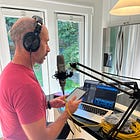Brightly feathered book review
The act of writing a book does not confer the skill of reviewing them, but it does change your relationship with book reviews. I try not to check every day, but I do, scanning the top of the page for that number, feeling a little thrill when a new review goes live, scrolling down to read it. Yes, five stars still. There are clear themes in what readers having been saying—the elements of the story they enjoyed, the pacing of the book, the emotions stirred, the knowledge they have now, having spent time with my narrator.
I doubt it’s possible for most readers and amateur reviewers to divorce their motivations for reading from the rating they give. Those stars are a true up of the work and the expectations they approached it with. For the folks who had something less than laudatory words about my book, I wonder where I missed the mark; I wonder what they wanted that was missing.
Many, perhaps most, read for pleasure, to escape reality for a while and place themselves in another world. The motivation is a form of entertainment. Nothing wrong with this of course—reading is arguably a better use of time than scrolling or passively watching TV. My primary motivation for reading is different. I read to learn. I want to be challenged, to be presented with ideas and perspectives I hadn’t considered, to discover an area of study or life lived. And hopefully, when I put down the book, I walk away knowing something I didn’t know before. That is the basis of how I review books—did I learn something?
Recently, two authors reached out to me. One, a memoirist whose book was published a few years back, and another with a non-fiction title set for release early next month. What follows is my attempt at a book review for this latter title. I’ve tried to be fair minded, despite the fact that self-help is not a genre I usually read or write about and, frankly, it’s one I am suspicious of (just read the introduction to my book).
Book review: Becoming a Peacock

TLDR version:
Self-help advice wrapped in heavy-handed peacock metaphors, mostly based on learnings from the author’s love life. Written for anyone, but feels like a book for young women.
Becoming a Peacock: Strut Your Way Into Self-Love by Michal Bardavid is a self-help guide/memoir that encourages readers to be independent, confident, and resilient through the use of peacock metaphors and real-life stories, mostly about fraught romantic relationships. The prose is simple, often casual—weekend brunch with mimosas casual, complete with OMG’s and quotes from Miley Cyrus songs.
The basic structure of each chapter is:
Peacock metaphor and life advice
A story from Bardavid’s past
Summary of the lesson learned
The advice Bardavid offers readers is sound, simple, non-controversial; anodyne to the point of “well yeah, duh.” I found myself wondering who this book was for, and it would be fair to say, judging by the general tenor of the content, the depth, and the this happened and now I know better vibe, this book is best suited for a teenager or young adult navigating early life romantic relationships.
Bardavid has plenty of lessons and watchpoints for women navigating the minefield of dating men, but her attempt to universalize the peacock ethos simply dilutes it. The author’s background, her life experience, clientele for her workshops—add all of it up and one wonders if the book would be more useful if it spoke directly to young to middle aged women. She is, after all, a heterosexual woman with advice that is mostly relevant to other hetero women.
The choice to imagine a peacock as “all genders” was probably strategic—but I struggled to find much substantive advice that felt relevant. The men our author describes have clever names (Shiny, Big, Sunshine, Vandamme, Bond) but they are all anti-patterns, besides her husband, who is something of an outlier. Bardavid does reflect on the why behind her partner choices—which is illuminating—but these moments are limited. The central focus here is helping readers discover the “self-loving peacock within.”
Perhaps it’s too obvious, but the real target audience (I would venture to guess) is the author’s current or prospective clients. Given the number of references to dance therapy classes, the book presumably will act as a supplementary resource, an extension of her peacock/self-love/self confidence brand. This is a common approach nowadays: build a business, write a book, get more business, then write another brand-building book.
So if you or a young adult you know are looking for easy-to-read self-help vignettes with a feathery flair, interspersed with retellings of relationships woes, from a Turkish journalist turned dance teacher, Becoming a Peacock is the book you want. I learned a great deal about Michal Bardavid’s personal journey through problematic relationships to a place of self-love and acceptance, but not much else.



